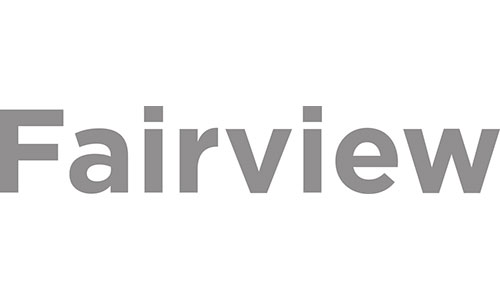You know video could be a powerhouse for your brand. What’s stopping you? Time? Energy? Equipment? Whatever your hurdle is, we’re here to assure you that you can get over it. Video is too important to your brand communication to keep it on the sidelines.
Right now, video is the strongest tool in your marketing toolbox. It has the ability to tell stories with depth in a matter of seconds or minutes. The footage can be rearranged again and again to create more content and keep your story going strong.
Video & ROI
When it comes to the importance of video, let’s look at the numbers.
- 94% of advertisers think videos improve customer knowledge of brand’s purpose.
- 93% of marketers saw an uptick in customers from social media videos.
- In 2022, the general population will watch 100 minutes of online videos a day.
The stats supporting video use are endless. It’s time for you to get started.
How do you get started with video marketing?
You shouldn’t just create a video to create a video. Purpose and strategy ensure marketing efforts actually work. When you have that laid out, the direction your video needs to go will be easy to see.
Know your brand
Before a single word can be written or a frame imagined, you need to fully understand your brand. A funny video isn’t going to work for certain causes and a serious tone isn’t going to work for others. Look over your brand guidelines and voice. Once you’re comfortable, it’s on to strategy.
Know your goals
What are your brand’s goals for this year? Write down SMART goals. Once you have them determined, you or a creative team can build a strategy around them.
Choose your team
If you have the skills in-house, you can create your video with your internal team. If you don’t, we highly suggest you work with an outside creative team.
An external team will be able to look over your brand and goals and give you original suggestions for video. They’ll also be able to write, produce, and edit your video. You can be as on-hand with the project as you would like.
Our clients enjoy working with an outside team because they can oversee the work – but not have to understand every detail of video production or editing. Throughout any video project – and any project in general – we keep our clients in the know.
Choose a direction
Your internal or external team will present several ideas for the video(s). You will decide which direction suits your goals the best. This may take a few rounds of conversations and edits. It all leads to a stronger concept and a better story.
Scripts & storyboards
Once you pick a route, the creative team will write a script or outline. In most cases, scripts and storyboards are needed to flesh out a video idea. Sometimes, if the story is built around interviews, an outline and storyboard will work. A storyboard is a panel of sketches depicting the scenes in your video. It gives the entire creative team an idea of what is being shot and how it all comes together.
Planning & production
After scripts and storyboards have been approved, it’s time for production. This includes finding shooting locations, talent, props, outfits, and off-screen details like feeding people and transportation. The more thought put into this stage, the better the shoot days will go.
Filming
The day is here! You have everything planned, now it’s time to say action. While this day is always a bit crazy, enjoy it! It’s so fun to see all your hard work come together. We suggest making sure you have lots of coffee, water, granola bars, and be ready for a long day on your feet. It takes a lot of energy but you got this. The right creative team will ensure you’re not stressing but enjoying this part of the process.
Edits
You got the footage you need. Now it’s time for the editing team to work their magic. This is where music will be chosen and brand elements will be added. Don’t be afraid to be picky. You’re paying good money for this video and it should reflect your vision. That being said, a production team can offer great suggestions for scenes that just aren’t working in post-production. The key is to trust each other and communicate your thoughts. This way, when it’s finished, you’ll have a video that can move mountains for your brand.
Share with the world
It’s perfect. Now it’s time to share with the world. Whether it’s on a streaming channel or posted organically on Instagram, this video strengthens your brand. Great work! Let’s watch those numbers go up up up.
Phone vs. Professional
Some ponder if it’s worth it to invest in professional videography when phones have great cameras. When should you use a phone and when should you use a specialty camera for marketing?
It depends.
We would recommend a phone for shooting everyday social media footage. But for campaign work that will have a longer shelf life and be seen across many different screens or presentations, we recommend leveling up to a professional-level camera. A production team can help you get the results you want. Plus, this footage can be used down the line to create more video content. Make sure to check with your production team to see who owns the footage.
Start with your YouTube account and have some fun. Brainstorm what message you want to tell. If that’s not in your wheelhouse, find a creative agency that can master that art form for you.
Social Video Tips
Maybe you’re not quite ready to commit to a bigger-budget commercial shoot. That is okay! We suggest starting small with a phone-shot video for social. This will get you comfortable with your brand storytelling. It’s a very quick and easy way to connect with your audience.
Keep these pointers in mind when creating social video content
- Shoot straight – try to keep the camera from bouncing around. Setting your phone on a flat surface can keep moving footage from distracting viewers
- Pay attention to audio – Audio on your phone isn’t going to be perfect – but can work well. Just pay attention to external sounds when you’re shooting. It could be a plane, an air vent, or someone whispering in the background. All these factors can make a great shot unusable, unfortunately.
- Check your background – busy backgrounds can ruin your video. Keep an eye out for bright colors or strangers getting in the shot.
- No logos – To be safe, really try to avoid other companies’ logos in any videos or images. You should be fine, but some brands get very picky about where their logo shows up. Play it safe, and go for brandless cloth items or backgrounds.
- Shoot more than you need – it’s better to have too much footage to work with than too little. Even little snippets can be used as behind-the-scenes footage.
- Don’t be afraid to show yourself – people love connecting with the person (or mascot) of a brand. Get comfortable being a spokesperson for a brand.
Choosing social platforms
There are several spots where you can be creating social media videos. Which one you choose depends on your audience and your goals.
YouTube – This is the world’s largest search engine. It’s a great spot for professionally shot horizontal video.
YouTube Shorts – If you have a large YouTube audience and want to share vertical video with them, this is the space.
Instagram Reels – If you already have a large following or a growing following here, this can be a great spot to post videos.
TikTok – If you have a younger audience this is the spot to post vertical videos. It also offers a space for the greatest organic growth at this point in time.
We suggest trying each one out and seeing which medium suits your brand best.
Final thoughts
No matter which direction you take with your video, just don’t forget about it. It’s becoming increasingly important to your marketing messaging. We love creating video ideas that capture attention and earn new audiences. If you want to know more about video production or our shooting process, send us a message. We’re always ready to help brands get the most out of video.



